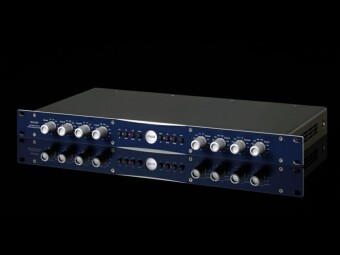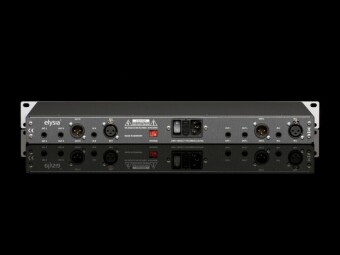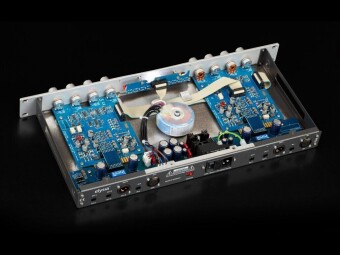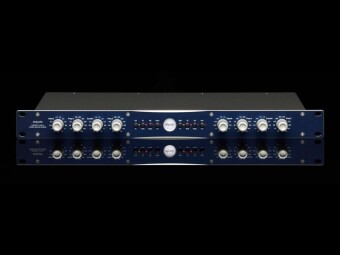Elysia nvelope




 4 154 BYN предложить свою цену
41743
4 154 BYN предложить свою цену
41743
nvelope
Analog Transient Shaper
Three Devices in One
The nvelope operates independently of the specific level of a signal, and (unlike with compressors) you do not have to spend a lot of time trying to balance a set of complex controls to quickly get the results you seek. With its unique Dual Band mode, the nvelope gives you enhanced control over processing, and can handle complex program material as well.
Additionally, its dynamics sections can be bypassed, allowing it to function as a flexible high/low shelf Equalizer.
Full Range Mode
The nvelope is a powerful audio processor capable of making subtle or drastic changes to a sound by providing control over its attack and sustain characteristics. This is extremely useful for reshaping all sorts of individual tones, and is a wonderful tool in any mixing situation as well.
The nvelope operates independently of the specific level of a signal, and (unlike with compressors) you do not have to spend a lot of time trying to balance a set of complex controls to quickly get the results you seek.
Full Range mode is especially fast and easy to use, as all you need to do is dial in more or less attack and sustain by turning their specific controllers to the left (reduction) or to the right (increase).
Similar to a compressor and unlike in Dual Band mode, you can use the Freq A controller to reduce the influence of low frequencies on the attack processing (higher frequency = less bass influence).
Dual Band Mode
The unique Dual Band mode of the nvelope takes you to the next level of impulse shaping. The attack and sustain parameters become much more flexible by selectively processing a certain frequency range chosen by the user.
The Freq A controller now sets the start frequency for attack processing, while the Freq S controller determines the end frequency for sustain processing. The function of the Attack and Sustain controllers remains the same as in Full Range mode.
So it is pretty likely you’ll find yourself using the Dual Band mode in any situation where you would like to adapt the way the nvelope processes more individually and on material which tends to produce unwanted artifacts in Full Range mode.
Generally speaking, Dual Band mode gives you more distinct processing options and the possibility to even cope with complex material like a summing bus.
EQ Mode
A very nice side effect of the topology of the nvelope is that it can also be used as a shelving filter. This is achieved by temporarily deactivating its dynamics sections while keeping the filter stages active.
Freq A now sets the frequency of the high shelf filter, while Attack determines the amount of cut (turn left) or boost (turn right) in this band. Similarly, Freq S sets the frequency of the low shelf filter and Sustain determines the amount of cut or boost.
The special architecture also allows for another nice feature which is kind of hard to find on other EQs: Not only can the two channels be used as two separate equalizers at the same time, but they can be linked for processing stereo material conveniently as well.
Mixed Mode
The nvelope really gets the best out of its two separate channels. It can be two channels of Full Range or Dual Band impulse shaper or shelving EQ, which can be operated stereo linked or dual mono.
But, the two separate channels can also be used for different tasks at the same time. For example, you can shape one signal in Dual Band mode in channel L and a completely different signal in Full Range mode in channel R.
Or, you can connect the output of channel L to the input of channel R, and then process the frequency response of one single signal with the EQ first, followed by some nice Dual Band impulse shaping.
As you can imagine, there are lots of possible combinations.
Dual Mono/Stereo Link
The header says it all, but you might want to have a look at the possible channel combinations resulting from this. Ultimate flexibility!
Stereo Link:
2 x Full Range
2 x Dual Band
2 x EQ
Dual Mono:
Full Range – Full Range
Full Range – Dual Band
Full Range – EQ
Dual Band – Full Range
Dual Band – Dual Band
Dual Band – EQ
EQ – Full Range
EQ – Dual Band
EQ – EQ
Auto Gain
Boosting the attack in Full Range mode can sometimes result in some pretty huge level peaks. These can make your processed signal sound uneven, and in the worst case they will create the nasty kind of distortion you don’t want.
The nvelope solves this very conveniently with the Auto Gain function. This simple button makes the impulse shaper automatically compensate stronger level peaks, so this can be the solution for many level-related issues caused by the attack processing.
By the way, Auto Gain is typically not needed in Dual Band operation and therefore not offered in this mode. Also, Auto Gain does not have any influence on a channel operating in EQ mode.
Stepped Potentiometers
The nvelope features fully stepped potentiometers for its frequency controllers.The 41 steps make a precise recall very easy, and they provide a useful range of possible settings at the same time. And you will just love the feel of them, too.
For the gain controllers we have decided to use potentiometers with a single center detent instead. During the development process we noticed that finding the neutral position for ‘bypassing’ a processing section at once comes in very handy
Discrete Class-A Topology
We love the sound of class-A circuitry! And here is why: In a class-A amplifier, the transistors are conductive all of the time, so there is no crossover distortion at all. This is the perfect technological basis for an open sound with massive punch and no degradation of your original source.
The discrete approach makes it possible to design every single stage. In signal processing exactly to what you want it to do – physics becomes the only limit. The karacter uses our custom discrete input and output stages derived from the alpha compressor, and the complete audio path is a fully discrete class-A design, too.
The benefit of this pristine circuitry is a saturation tool capable of adding substantial amounts of color to a signal without degrading its original quality. And even if quite massive distortion is applied, the result will always sound interesting and never bad. A very welcome side effect is the noise floor which is pleasingly low for a processor of this kind.
Technical Data
Frequency response
<10 Hz - 400 kHz (-3.0 dB)THD+N
@ 0 dBu, 20 Hz – 22 kHz: 0.006 %
@ +10 dBu, 20 Hz – 22 kHz: 0.01 %
Noise floor A-weighted
20 Hz – 20 kHz (Full Range, EQ): -90.0 dBu
20 Hz – 20 kHz (Dual Band): -87.0 dBu
Dynamic range
20 Hz – 22 kHz: 112 dB
Maximum level
Input: +21 dBu
Output: +21 dBu
Impedance
Input: 10 kOhm
Output: 68 Ohm
